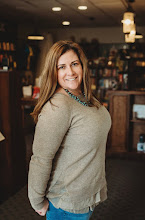Once
August rolls around I begin working on my classroom to prepare for a new year.
I always start with the actual set up of the room. Once the furniture is in
place my attention turns to my classroom library.
 |
| I was excited to make new baskets for books by Tom Angleberger and Kate Messner. Whenever I have a lot of books by one author they get a basket. |
I’ve long
believed in the importance of the classroom library (and the school library
WITH a librarian – but that’s another post). When I switched from being
self-contained to semi-departmentalized, my classroom library slowly took over
my entire room. I believe Dr. Allington has recommended somewhere from 750-1500
books for a classroom library. According to Booksource I now have just over
2000 books in my classroom library. In all honesty, sometimes I feel I have too
many – that maybe it is a bit overwhelming to students. But after weeding it
out greatly over the last few years, there aren’t many I feel I can get rid of.
When you have a great number of books in a classroom, I think organization is the key. For the last two days that has been my goal in working in my classroom – ensure the library is organized. A friend volunteered her time and we began with wiping out each basket, making sure the books were in the correct basket, and that they were all facing front.
 |
| Hot reads on the tall shelf, authors on the low shelves. |
As you
walk in my room the wall to your left has book organized by author in
alphabetical order by their last name. There is also a tall shelf at the start
that contains “Hot books” – ones that I have book talked, or students have. I
still have it stocked with last year’s hot books but it will be changing over
to the new groups recommendations soon.
 |
| Genre, Newbery, Caldecott, Picture Books. |
The wall
opposite the door has books grouped in baskets by series and genre. At the end
of those shelves are baskets that contain Caldecott, Newberry, and my
collection of picture books.
 |
| Graphic Novels |
Opposite
of it there is a freestanding shelf behind the couch. It contains graphic novels
or what I call graphic novel “hybrids”. This is probably my most rotated
section in the room.
 |
| Part of my non-fiction. State award nominees are on top. |
Finally I
have two different shelves housing my non-fiction books. After a lot of
deliberation I sorted these by the Dewey Decimal system. My reason being if
someone was reading a poetry book from my classroom and they wanted to go to
our school library and find more poetry books, the sticker on the book will
tell them to look at 811. Some non-fiction books are in baskets; many are
standing on their side.
All books
have labels that say the basket the book belongs in, whether it is classified
as fiction or nonfiction, and SOKOLOWSKI (my last name). I also write my name across the pages
at the top of the book incase the sticker on the front falls off.
Finally,
this year I will be using Booksource Classroom Organizer for library check out.
My students took time at the end of the year to scan all of my books into the
website. My reading camp students used it this summer to check out books. We
had a few issues but overall it was wonderful. So I am hoping that this year
will be the year I keep track of more books!
A
classroom library is an investment for certain. But I firmly believe that one
of the reason my students read so much is that they are surrounded by books.
The other reason being I can turn to any shelf and recommend a variety of books
because I’ve read them. If you are just building your library, there are many
ways to accumulate books. Ask parents to donate gently used books. Put books up
on Donors Choose. Create a wish list on Amazon. Ask for gift cards to bookstores
in lieu of gifts. I used to be hesitant to suggest that, but now I inform
parents at parent night that I am the sole provider of the books in my
classroom and if they ever are looking for something to give me, gift cards are
excellent. J And now that my library is ready,
I can begin.
















